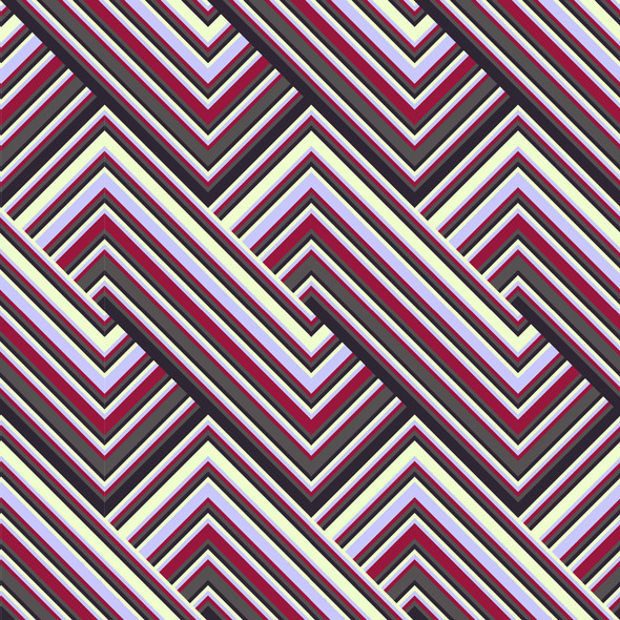

Vector images, on the other hand, can be scaled up much more easily and retain their sharpness and integrity at any size. Raster images are pixelated, which is fine when you’re designing something small, but not so great if you want to enlarge an image. Why? Because it uses vector images (and vector lines) rather than raster images, as some other programs (like Photoshop) do. Illustrator is the preferred program by many graphic designers. Line patterns can be combined with other types of graphic and geometric elements, like dots. Student work by Jesse Bradley for Illustrator for Lunch – Pattern of Lines and Dots This pattern of lines and clouds repeats seamlessly in all directions and can be created using Photoshop. Photoshop and other design programs can be used to create organic-looking patterns. This line pattern creates a layered effect by coloring the lines differently so some lines sit atop other lines, and others lie underneath. Student work by Mona Iordache for Illustrator for Lunch – Whimsical Diagonal Line Patterns Student work by Stavroula Kaparou for Pattern Design: From Straight to Wonky Lines with Adobe Illustrator and Fresco Line patterns-like this geometric line art-can include lines going in multiple and opposing directions. Student work by Joy Vick for Stripes and Line Patterns in Under 60 Seconds Plaids and tartans are types of line art patterns commonly used in clothing, accessories, and furnishing. Student work by Paola Felisatti for Illustrator for Lunch – Create a Plaid or Tartan Pattern These line patterns use stripes in very different ways, for diverse effects. Student work by Stephanie Fricke-Goode for Photoshop for Lunch – More Patterns – Diagonal Stripes, Chevrons, Plaid, Colorful Polka Dots This simple line pattern has a striking effect because of the contrasting black and white lines.


Take the Class Examples of Line Patterns to Draw Student work by Emma Make for Stripes and Line Patterns in Under 60 Seconds Artists and designers can get quite creative with the composition of line patterns. Although parallel lines are one type of line pattern, they’re not the only type. “Regular,” though, doesn’t alway mean predictable or uniform. In art, this line vector doesn’t need to be straight, and in fact, many line patterns are not straight at all.Ī pattern is a repeated or regular way of doing something, so a line pattern is where lines have been drawn or placed in a repeated, regular way to create a visual effect. In math, a line vector is a straight line between a starting point and a secondary point. Not all line patterns use straight geometric lines, but you’ll find that many of them do. So, a geometric line in art is one that is straight, regular, and uniform. Geometry is the branch of mathematics that deals with lines, angles, curves, and shapes. Here, we introduce the concept of line patterns, give some attractive and inspiring examples of line art patterns, and walk you through the steps to follow to create your own using Adobe Illustrator and other design programs. Line pattern art is a fundamental part of graphic design, and it can take so many forms: line patterns can be vertical, horizontal, diagonal, zigzag, curved, wavy, cross-hatched, and more.


 0 kommentar(er)
0 kommentar(er)
